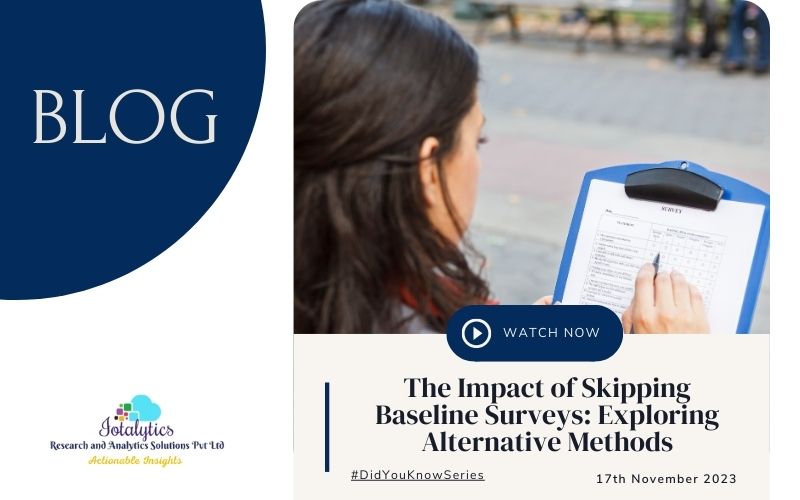
The Impact of Skipping Baseline Surveys: Exploring Alternative Methods
September 29, 2024, Did You Know series
The Impact of Skipping Baseline Surveys: Exploring Alternative Methods - Video
Ever wondered what happens if there's no Baseline Survey? In project evaluation, a Baseline Survey serves as a crucial reference point for measuring progress and impact. Without it, organizations may face challenges in assessing the effectiveness of their interventions. However, there are alternative methods to gather essential data when a Baseline Survey is not feasible. Let’s explore these options.
1. Collect Retrospectively at Midterm or Later
One way to address the absence of a Baseline Survey is to collect data retrospectively during a midterm evaluation or even after the project has concluded. This method involves asking participants to recall their conditions before the project started. While this approach can provide some insight, it is important to note the limitations:
- Memory Bias: Participants may not accurately remember their previous circumstances, leading to potential inaccuracies.
- Reliability Issues: The quality of the data collected may vary depending on individual recollections.
Despite these challenges, retrospective data collection can still offer valuable information when no other options are available.
2. Using Secondary Data to Reconstruct the Baseline
Another alternative is to utilize secondary data sources. This involves analyzing existing reports, studies, or surveys that may provide insights into the baseline conditions relevant to the project. Benefits of this approach include:
- Cost-Effectiveness: It can be more affordable than conducting a new survey.
- Existing Data: It leverages data that is already available, saving time and resources.
However, it is crucial to ensure that the secondary data is relevant, reliable, and reflective of the specific context of the project, as discrepancies can lead to misleading conclusions.
3. Using Administrative Data from the Intervention
Administrative data refers to the information collected through routine records and reports related to the intervention. This data can provide insights into various aspects of the target population and can be particularly useful for:
- Tracking Progress: Administrative data can help monitor trends and changes over time.
- Resource Allocation: It aids in understanding how resources are utilized within the intervention.
While this method can yield valuable information, it may not capture all relevant factors influencing the baseline, necessitating a careful analysis of the data collected.
4. Complexity-Aware Methods
Complexity-aware methods, such as Most Significant Change (MSC) and Outcome Harvesting, offer innovative approaches to understanding change and impact without relying solely on traditional baseline data.
Most Significant Change (MSC): This qualitative approach involves collecting stories from participants about significant changes they experienced as a result of the intervention. These narratives provide rich, context-specific insights into the impact of the project.
Outcome Harvesting: This method focuses on identifying and analyzing outcomes achieved as a result of the intervention, allowing for flexibility in understanding success.
Both methods emphasize capturing qualitative data, offering a nuanced understanding of the project's impact, although they may lack the quantitative rigor that a Baseline Survey would provide.
Conclusion
While Baseline Surveys are essential for effective project evaluation, alternative methods can still provide valuable insights when they are not possible. Each approach comes with its strengths and limitations, and selecting the right one depends on the specific context of the project, available resources, and desired outcomes. Understanding these alternatives can help organizations make informed decisions and ensure that they can still assess their impact meaningfully.
In the end, while the absence of a Baseline Survey poses challenges, it doesn’t eliminate the possibility of gathering useful data to evaluate project effectiveness. By leveraging these alternative methods, organizations can still gain valuable insights to drive their interventions forward.
